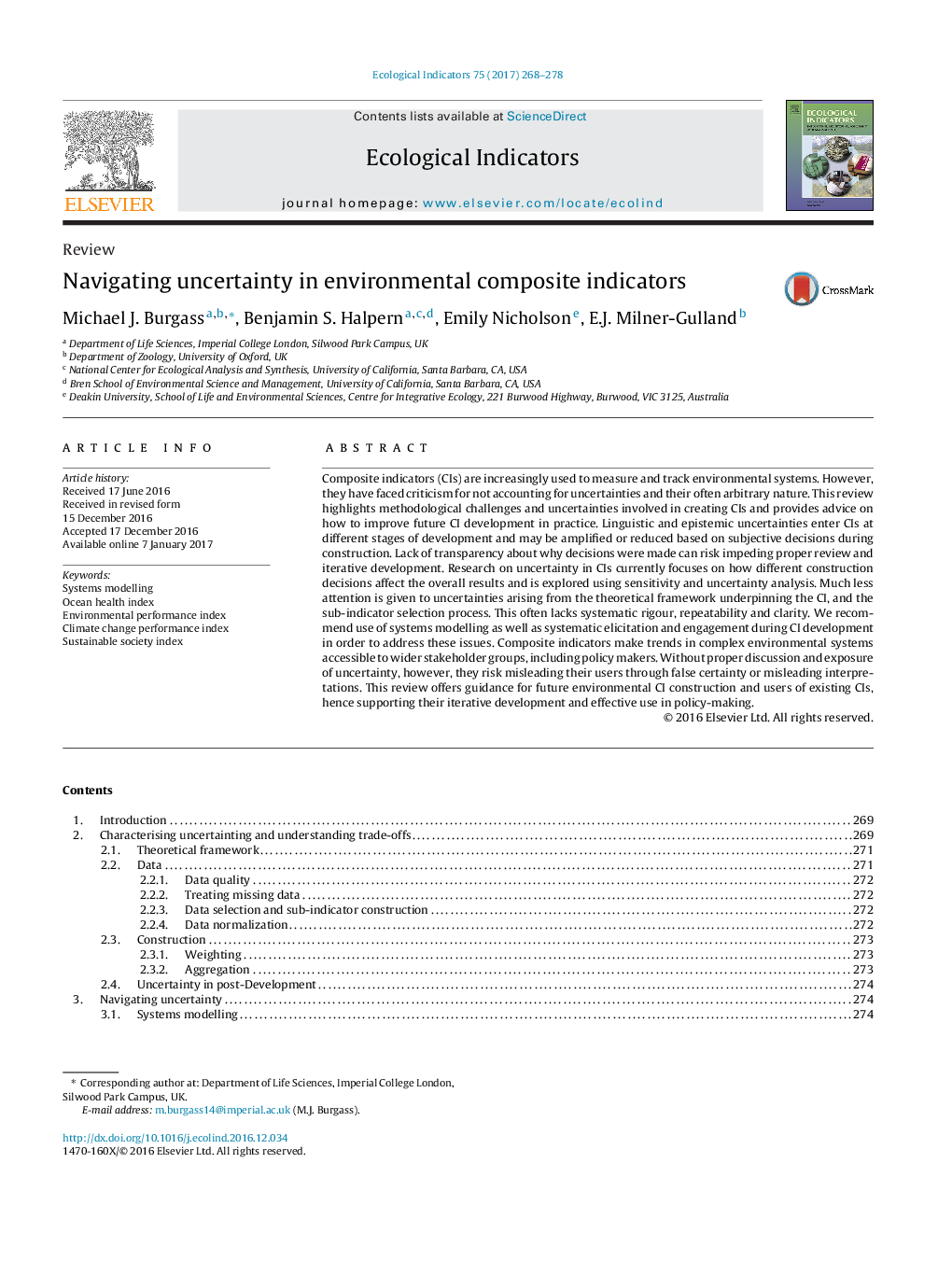| Article ID | Journal | Published Year | Pages | File Type |
|---|---|---|---|---|
| 5741818 | Ecological Indicators | 2017 | 11 Pages |
â¢Multiple sources and types of uncertainty found in composite indicators.â¢Existing treatment focuses mainly on sensitivity and uncertainty analyses.â¢Deep uncertainty and lack of transparency impedes review and iterative development.â¢We recommend systems modelling and systematic engagement to overcome uncertainty.â¢We provide a framework for analysing uncertainty in composite indicators.
Composite indicators (CIs) are increasingly used to measure and track environmental systems. However, they have faced criticism for not accounting for uncertainties and their often arbitrary nature. This review highlights methodological challenges and uncertainties involved in creating CIs and provides advice on how to improve future CI development in practice. Linguistic and epistemic uncertainties enter CIs at different stages of development and may be amplified or reduced based on subjective decisions during construction. Lack of transparency about why decisions were made can risk impeding proper review and iterative development. Research on uncertainty in CIs currently focuses on how different construction decisions affect the overall results and is explored using sensitivity and uncertainty analysis. Much less attention is given to uncertainties arising from the theoretical framework underpinning the CI, and the sub-indicator selection process. This often lacks systematic rigour, repeatability and clarity. We recommend use of systems modelling as well as systematic elicitation and engagement during CI development in order to address these issues. Composite indicators make trends in complex environmental systems accessible to wider stakeholder groups, including policy makers. Without proper discussion and exposure of uncertainty, however, they risk misleading their users through false certainty or misleading interpretations. This review offers guidance for future environmental CI construction and users of existing CIs, hence supporting their iterative development and effective use in policy-making.
Graphical abstractDownload high-res image (131KB)Download full-size image
